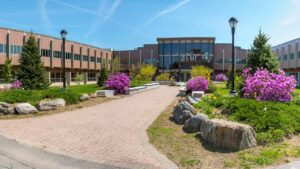About the Department
Our program began in 1935 and now covers a wide breadth of wildlife science including wildlife ecology and biology, conservation biology, and wildlife management. Undergraduates can focus on individual interests such as fisheries, management of rare and endangered species, forestry, environmental education, and many other areas. Our graduate students pursue research on a wide variety of ecological and conservation issues in Maine, the nation, and internationally. Students in our program also benefit from the many other programs in the College of Earth, Life, and Health Sciences that offer programs in the areas of ecology, biology, marine science, environmental science, forestry, and natural resource management and policy.
The Department has nine university faculty, about thirty graduate students, and averages one hundred eighty undergraduates. There also are three federal biologists with the United States Geological Survey (USGS) on the faculty. The USGS faculty are part of the Maine Cooperative Fish and Wildlife Research Unit, which brings together the University of Maine (UMaine), the United States Fish and Wildlife Service (USFWS), and the Maine Department of Inland Fisheries and Wildlife (MDIFW) to foster wildlife research and graduate education.
The Department of Wildlife, Fisheries, and Conservation Biology (WFCB) is located in Nutting Hall on the UMaine campus along with the School of Forest Resources. UMaine is the flagship campus of the University of Maine System and the state’s principal research and graduate institution. The campus is located in north-central Maine in the town of Orono – just north of Bangor. The university is close to a diverse array of natural areas; including the Atlantic coast, the northern mountains, the most extensive forests in the northeast, and many lakes and rivers.

